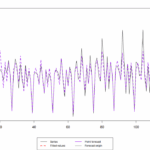When I read posts written by some ML experts, I sometimes notice that they either overlook or do not clearly explain a few crucial steps in demand forecasting. In this post, I want to highlight the three most important ones based on my personal experience. First and foremost, stationarity (see the proper definition of the […]
Several crucial steps in demand forecasting with ML













